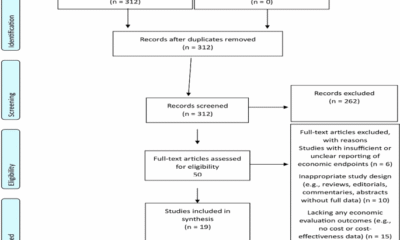Edwards, A. M. et al. Too many roads not taken. Nature 470, 163–165 (2011).
CAS
PubMed
Google Scholar
Moustakim, M. et al. Target identification using chemical probes. Methods Enzymol. 610, 27–58 (2018).
CAS
PubMed
Google Scholar
Bond, M. J. & Crews, C. M. Proteolysis targeting chimeras (PROTACs) come of age: entering the third decade of targeted protein degradation. RSC Chem. Biol. 2, 725–742 (2021).
CAS
PubMed
PubMed Central
Google Scholar
Kanev, G. K., de Graaf, C., Westerman, B. A., de Esch, I. J. P. & Kooistra, A. J. KLIFS: an overhaul after the first 5 years of supporting kinase research. Nucleic Acids Res. 49, D562–D569 (2021).
CAS
PubMed
Google Scholar
Bender, B. J. et al. A practical guide to large-scale docking. Nat. Protoc. 16, 4799–4832 (2021).
CAS
PubMed
PubMed Central
Google Scholar
Petrović, D. et al. Virtual screening in the cloud identifies potent and selective ROS1 kinase inhibitors. J. Chem. Inf. Model. 62, 3832–3843 (2022).
PubMed
Google Scholar
Alon, A. et al. Structures of the σ2 receptor enable docking for bioactive ligand discovery. Nature 600, 759–764 (2021).
CAS
PubMed
PubMed Central
Google Scholar
Stein, R. M. et al. Virtual discovery of melatonin receptor ligands to modulate circadian rhythms. Nature 579, 609–614 (2020).
CAS
PubMed
PubMed Central
Google Scholar
Ren, F. et al. A small-molecule TNIK inhibitor targets fibrosis in preclinical and clinical models. Nat. Biotechnol. 43, 63–75 (2025).
CAS
PubMed
Google Scholar
Lyu, J. et al. Ultra-large library docking for discovering new chemotypes. Nature 566, 224–229 (2019).
CAS
PubMed
PubMed Central
Google Scholar
Schneider, P. et al. Rethinking drug design in the artificial intelligence era. Nat. Rev. Drug Discov. 19, 353–364 (2020).
CAS
PubMed
Google Scholar
Zhu, T. et al. Hit identification and optimization in virtual screening: practical recommendations based on a critical literature analysis. J. Med. Chem. 56, 6560–6572 (2013).
CAS
PubMed
PubMed Central
Google Scholar
Schneider, G. Virtual screening: an endless staircase? Nat. Rev. Drug Discov. 9, 273–276 (2010).
CAS
PubMed
Google Scholar
Carter, A. J. et al. Target 2035: probing the human proteome. Drug Discov. Today 24, 2111–2115 (2019).
CAS
PubMed
Google Scholar
Ackloo, S. et al. CACHE (Critical assessment of computational hit-finding experiments): a public–private partnership benchmarking initiative to enable the development of computational methods for hit-finding. Nat. Rev. Chem. 6, 287–295 (2022).
PubMed
PubMed Central
Google Scholar
For chemists, the AI revolution has yet to happen. Nature 617, 438 (2023).
Mock, M., Edavettal, S., Langmead, C. & Russell, A. AI can help to speed up drug discovery — but only if we give it the right data. Nature 621, 467–470 (2023).
CAS
PubMed
Google Scholar
Martin, E. J. et al. All-assay-max2 pQSAR: activity predictions as accurate as four-concentration IC50s for 8558 novartis assays. J. Chem. Inf. Model. 59, 4450–4459 (2019).
CAS
PubMed
Google Scholar
Landrum, G. A. & Riniker, S. Combining IC50 or Ki values from different sources is a source of significant noise. J. Chem. Inf. Model. 64, 1560–1567 (2024).
CAS
PubMed
PubMed Central
Google Scholar
Martin, E. J. & Zhu, X. W. Collaborative profile-QSAR: a natural platform for building collaborative models among competing companies. J. Chem. Inf. Model. 61, 1603–1616 (2021).
CAS
PubMed
Google Scholar
Zardecki, C., Dutta, S., Goodsell, D. S., Voigt, M. & Burley, S. K. RCSB Protein Data Bank: a resource for chemical, biochemical, and structural explorations of large and small biomolecules. J. Chem. Educ. 93, 569–575 (2016).
CAS
Google Scholar
Moult, J., Pedersen, J. T., Judson, R. & Fidelis, K. A large‐scale experiment to assess protein structure prediction methods. Proteins 23, ii–v (1995).
CAS
PubMed
Google Scholar
Edfeldt, K. et al. A data science roadmap for open science organizations engaged in early-stage drug discovery. Nat. Commun. 15, 5640 (2024).
CAS
PubMed
PubMed Central
Google Scholar
Thorne, N., Auld, D. S. & Inglese, J. Apparent activity in high-throughput screening: origins of compound-dependent assay interference. Curr. Opin. Chem. Biol. 14, 315–324 (2010).
CAS
PubMed
PubMed Central
Google Scholar
Clark, M. A. et al. Design, synthesis and selection of DNA-encoded small-molecule libraries. Nat. Chem. Biol. 5, 647–654 (2009).
CAS
PubMed
Google Scholar
McCloskey, K. et al. Machine learning on DNA-encoded libraries: a new paradigm for hit finding. J. Med. Chem. 63, 8857–8866 (2020).
CAS
PubMed
Google Scholar
Li, A. S. M. et al. Discovery of nanomolar DCAF1 small molecule ligands. J. Med. Chem. 66, 5041–5060 (2023).
CAS
PubMed
PubMed Central
Google Scholar
Ahmad, S. et al. Discovery of a first-in-class small-molecule ligand for WDR91 using DNA-encoded chemical library selection followed by machine learning. J. Med. Chem. 66, 16051–16061 (2023).
CAS
PubMed
Google Scholar
Kelly, M. A., McLellan, T. J. & Rosner, P. J. Strategic use of affinity-based mass spectrometry techniques in the drug discovery process. Anal. Chem. 74, 1–9 (2002).
CAS
PubMed
Google Scholar
Prudent, R., Annis, D. A., Dandliker, P. J., Ortholand, J. Y. & Roche, D. Exploring new targets and chemical space with affinity selection-mass spectrometry. Nat. Rev. Chem. 5, 62–71 (2021).
CAS
PubMed
Google Scholar
Gesmundo, N. J. et al. Nanoscale synthesis and affinity ranking. Nature 557, 228–232 (2018).
CAS
PubMed
Google Scholar
L’Heureux, A., Grolinger, K., Elyamany, H. F. & Capretz, M. A. M. Machine learning with big data: challenges and approaches. IEEE Access. 5, 7776–7797 (2017).
Google Scholar
Najafabadi, M. M. et al. Deep learning applications and challenges in big data analytics. J. Big Data 2, 1 (2015).
Google Scholar
Lo, Y. C., Rensi, S. E., Torng, W. & Altman, R. B. Machine learning in chemoinformatics and drug discovery. Drug Discov. Today 23, 15–38-1546 (2018).
Google Scholar
Brenner, S. & Lerner, R. A. Encoded combinatorial chemistry. Proc. Natl Acad. Sci. USA 89, 5381–5383 (1992).
CAS
PubMed
PubMed Central
Google Scholar
Melkko, S., Dumelin, C. E., Scheuermann, J. & Neri, D. Lead discovery by DNA-encoded chemical libraries. Drug Discov. Today 12, 456–471 (2007).
Google Scholar
Gironda-Martínez, A., Donckele, E. J., Samain, F. & Neri, D. DNA-encoded chemical libraries: a comprehensive review with succesful stories and future challenges. ACS Pharmacol. Transl. Sci. 4, 1265–1279 (2021).
PubMed
PubMed Central
Google Scholar
Peterson, A. A. & Liu, D. R. Small-molecule discovery through DNA-encoded libraries. Nat. Rev. Drug Discov. 22, 699–722 (2023).
CAS
PubMed
PubMed Central
Google Scholar
Lim, K. S. et al. Machine learning on DNA-encoded library count data using an uncertainty-aware probabilistic loss function. J. Chem. Inf. Model. 62, 2316–2331 (2022).
CAS
PubMed
PubMed Central
Google Scholar
Tingle, B. I. et al. ZINC-22 — a free multi-billion-scale database of tangible compounds for ligand discovery. J. Chem. Inf. Model. 63, 1166–1176 (2023).
CAS
PubMed
PubMed Central
Google Scholar
Ackloo, S. et al. A target class ligandability evaluation of WD40 repeat-containing proteins. J. Med. Chem. 68, 1092–1112 (2024).
PubMed
PubMed Central
Google Scholar
Han, S. et al. Highly selective novel heme oxygenase-1 hits found by DNA-encoded library machine learning beyond the DEL chemical space. ACS Med. Chem. Lett. 15, 1456–1466 (2024).
CAS
PubMed
PubMed Central
Google Scholar
SGC and HitGen announce research collaboration focused on DNA-encoded library based drug discovery. HitGen https://www.hitgen.com/en/news-details-319.html (2023).
X-chem and structural genomics consortium enter into collaboration to unlock the human proteome and promote open science. X-Chem https://www.x-chemrx.com/about/news/x-chem-and-structural-genomics-consortium-enter-into-collaboration-to-unlock-the-human-proteome-and-promote-open-science/ (2023).
Wellnitz, J. et al. Enabling open machine learning of DNA encoded library selections to accelerate the discovery of small molecule protein binders. Preprint at https://doi.org/10.26434/chemrxiv-2024-xd385 (2024).
Prudent, R., Lemoine, H., Walsh, J. & Roche, D. Affinity selection mass spectrometry speeding drug discovery. Drug Discov. Today 28, 103760 (2023).
CAS
PubMed
Google Scholar
Xin, Y. et al. Affinity selection of double-click triazole libraries for rapid discovery of allosteric modulators for GLP-1 receptor. Proc. Natl Acad. Sci. USA 120, e2220767120 (2023).
CAS
PubMed
PubMed Central
Google Scholar
Liu, J. et al. The omega-3 hydroxy fatty acid 7(S)-HDHA is a high-affinity PPARα ligand that regulates brain neuronal morphology. Sci. Signal. 15, eabo1857 (2022).
CAS
PubMed
Google Scholar
Zhang, P. et al. Development of an α-klotho recognizing high-affinity peptide probe from in-solution enrichment. JACS Au 4, 1334–1344 (2024).
CAS
PubMed
PubMed Central
Google Scholar
Muchiri, R. N. & van Breemen, R. B. Affinity selection–mass spectrometry for the discovery of pharmacologically active compounds from combinatorial libraries and natural products. J. Mass Spectrom. 56, e4647 (2021).
CAS
PubMed
Google Scholar
Wang, X. et al. Enantioselective protein affinity selection mass spectrometry (EAS-MS). Preprint at https://doi.org/10.1101/2025.01.17.633682 (2025).
Paillard, G. et al. The ELF Honest Data Broker: informatics enabling public–private collaboration in a precompetitive arena. Drug Discov. Today 21, 97–102 (2016).
PubMed
Google Scholar
Quancard, J. et al. The European Federation for Medicinal Chemistry and Chemical Biology (EFMC) best practice initiative: hit generation. ChemMedChem 18, e202300002 (2023).
CAS
PubMed
Google Scholar
Giannetti, A. M., Koch, B. D. & Browner, M. F. Surface plasmon resonance based assay for the detection and characterization of promiscuous inhibitors. J. Med. Chem. 51, 574–580 (2008).
CAS
PubMed
Google Scholar
Rich, R. L. & Myszka, D. G. Grading the commercial optical biosensor literature — class of 2008: ‘The Mighty Binders’. J. Mol. Recognit. 23, 1–64 (2010).
CAS
PubMed
Google Scholar
Understanding SPR data. Critical Assessment of Computational Hit-Finding Experiments (CACHE) https://cache-challenge.org/sites/default/files/downloadable/forms/understanding_SPR_data.pdf (2024).
Wood, R. W. XLII. On a remarkable case of uneven distribution of light in a diffraction grating spectrum. Lond. Edinb. Dubl. Phil. Mag. J. Sci. 4, 396–402 (1902).
Google Scholar
Kartal, Ö., Andres, F., Lai, M. P., Nehme, R. & Cottier, K. waveRAPID — a robust assay for high-throughput kinetic screens with the creoptix WAVEsystem. SLAS Discov. 26, 995–1003 (2021).
CAS
PubMed
Google Scholar
Niesen, F. H., Berglund, H. & Vedadi, M. The use of differential scanning fluorimetry to detect ligand interactions that promote protein stability. Nat. Protoc. 2, 2212–2221 (2007).
CAS
PubMed
Google Scholar
Sparks, R. P. & Fratti, R. in Methods in Molecular Biology (ed. Fratti, R.) 1860, 191–198 (2019).
Langer, A. et al. A new spectral shift-based method to characterize molecular interactions. Assay Drug Dev. Technol. 20, 83–94 (2022).
CAS
PubMed
PubMed Central
Google Scholar
Meyer, P. & Saez-Rodriguez, J. Advances in systems biology modeling: 10 years of crowdsourcing DREAM challenges. Cell Syst. 12, 636–653 (2021).
CAS
PubMed
Google Scholar
Tunyasuvunakool, K. et al. Highly accurate protein structure prediction for the human proteome. Nature 596, 590–596 (2021).
CAS
PubMed
PubMed Central
Google Scholar
Jumper, J. et al. Highly accurate protein structure prediction with AlphaFold. Nature 596, 583–589 (2021).
CAS
PubMed
PubMed Central
Google Scholar
Manoharan, F. Google cloud expands higher education credits to 8 countries in Africa. Google Cloud https://cloud.google.com/blog/topics/public-sector/google-cloud-expands-higher-education-credits-8-countries-africa/ (2022).
MAchine learning Innovation Network For Research to Advance MEdicinal chemistry. MAINFRAME https://www.aircheck.ai/mainframe (2025).
Bedart, C. et al. The pan-Canadian chemical library: a mechanism to open academic chemistry to high-throughput virtual screening. Sci. Data 11, 597 (2024).
PubMed
PubMed Central
Google Scholar
Burley, S. K. & Berman, H. M. Open-access data: a cornerstone for artificial intelligence approaches to protein structure prediction. Structure 29, 515–520 (2021).
CAS
PubMed
PubMed Central
Google Scholar
Edwards, A. Reproducibility: team up with industry. Nature 531, 299–301 (2016).
CAS
PubMed
Google Scholar
Mammoliti, A. et al. Orchestrating and sharing large multimodal data for transparent and reproducible research. Nat. Commun. 12, 5797 (2021).
CAS
PubMed
PubMed Central
Google Scholar
Accessibility principles. Web Accessibility Initiative (WAI) https://www.w3.org/WAI/fundamentals/accessibility-principles/ (2024).











































